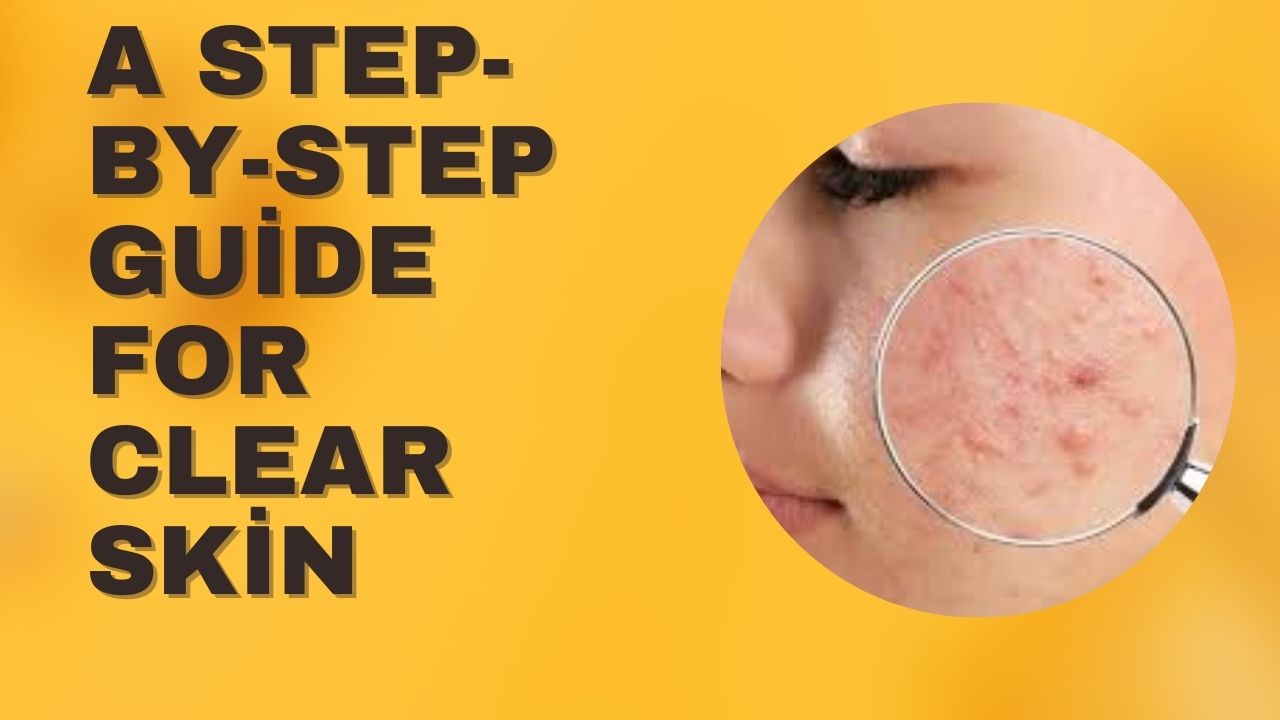How to Treat Acne: A Step-by-Step Guide for Clear Skin
Introduction Acne is one of the most common skin concerns, affecting people of all ages. Whether you’re dealing with occasional breakouts or persistent acne, finding the right treatment can feel overwhelming. The good news? With the right approach, you can achieve clear, healthy skin.
In this article, we’ll walk you through a step-by-step guide to treating acne, from understanding the causes to building an effective skincare routine. Plus, we’ll recommend some fantastic products available on Amazon to help you get started.
What Causes Acne?
Acne occurs when hair follicles become clogged with oil and dead skin cells. This can lead to whiteheads, blackheads, pimples, and even cysts. Common causes include:
- Excess Oil Production: Overactive sebaceous glands can clog pores.
- Dead Skin Cells: A buildup of dead skin cells can block follicles.
- Bacteria: The bacteria Cutibacterium acnes (C. acnes) can infect clogged pores, causing inflammation.
- Hormonal Changes: Fluctuations in hormones, especially during puberty, menstruation, or pregnancy, can trigger acne.
- Lifestyle Factors: Stress, diet, and certain skincare products can also contribute.
Understanding the root cause of your acne is the first step toward effective treatment.
Step 1: Cleanse Gently but Thoroughly
A proper cleansing routine is essential for removing dirt, oil, and makeup that can clog pores.
Tips for Cleansing:
- Use a gentle, non-comedogenic cleanser that won’t clog pores.
- Wash your face twice a day (morning and night) and after sweating.
- Avoid harsh scrubs or over-washing, which can irritate the skin.
- CeraVe Foaming Facial Cleanser – A gentle cleanser that removes excess oil without stripping the skin.
Step 2: Exfoliate Regularly
Exfoliation helps remove dead skin cells that can clog pores and lead to breakouts.
Tips for Exfoliating:
- Use a chemical exfoliant with salicylic acid or glycolic acid 2-3 times a week.
- Avoid physical scrubs, which can irritate acne-prone skin.
- Paula’s Choice Skin Perfecting 2% BHA Liquid Exfoliant – A gentle yet effective exfoliant for acne-prone skin.
Step 3: Treat Acne with Active Ingredients
Incorporate products with proven acne-fighting ingredients into your routine.
Key Ingredients to Look For:
- Salicylic Acid: Unclogs pores and reduces inflammation.
- Benzoyl Peroxide: Kills acne-causing bacteria and reduces oil production.
- Retinoids: Promote cell turnover and prevent clogged pores.
- Niacinamide: Reduces redness and regulates oil production.
- La Roche-Posay Effaclar Duo Dual Action Acne Treatment – Contains benzoyl peroxide and salicylic acid.
- The Ordinary Niacinamide 10% + Zinc 1% – Reduces redness and controls oil.
Step 4: Moisturize Daily
Even acne-prone skin needs hydration. Skipping moisturizer can lead to dryness, which may trigger more oil production.
Tips for Moisturizing:
- Choose a lightweight, non-comedogenic moisturizer.
- Look for ingredients like hyaluronic acid or ceramides.
- Neutrogena Hydro Boost Water Gel – A lightweight, hydrating moisturizer for acne-prone skin.
Step 5: Protect Your Skin with SPF
Sun exposure can worsen acne scars and inflammation. Always wear sunscreen, even on cloudy days.
Tips for Sun Protection:
- Use a broad-spectrum SPF 30 or higher.
- Choose a non-comedogenic formula to avoid clogging pores.
- EltaMD UV Clear Broad-Spectrum SPF 46 – A lightweight, acne-friendly sunscreen.
Step 6: Spot Treat Breakouts
For stubborn pimples, use a targeted spot treatment to reduce inflammation and speed up healing.
Tips for Spot Treating:
- Apply a small amount of treatment directly to the pimple.
- Avoid picking or popping pimples, which can lead to scarring.
- Mario Badescu Drying Lotion – A cult-favorite spot treatment for overnight results.
Step 7: Address Lifestyle Factors
Your daily habits can have a big impact on your skin.
Tips for a Clear Skin Lifestyle:
- Diet: Limit sugary and processed foods, which can trigger breakouts.
- Hydration: Drink plenty of water to keep your skin hydrated.
- Stress Management: Practice stress-reducing activities like yoga or meditation.
- Sleep: Aim for 7-9 hours of sleep per night to allow your skin to repair.
- Water Bottle with Time Marker – Stay hydrated throughout the day.
Step 8: Be Patient and Consistent
Acne treatments take time to work, so be patient and stick to your routine.
Tips for Consistency:
- Give new products at least 4-6 weeks to show results.
- Avoid switching products too often, which can irritate your skin.
When to See a Dermatologist
If over-the-counter treatments aren’t working, it may be time to consult a dermatologist. They can prescribe stronger medications like:
- Topical Retinoids: For severe acne and scarring.
- Oral Antibiotics: To reduce bacteria and inflammation.
- Hormonal Treatments: For hormonal acne (e.g., birth control or spironolactone).
- Isotretinoin (Accutane): For severe, treatment-resistant acne.
Conclusion
Treating acne requires a combination of the right products, consistent habits, and patience. By following this step-by-step guide, you can tackle breakouts and achieve clear, healthy skin.
Remember, everyone’s skin is different, so it may take some trial and error to find what works best for you. Stick with it, and don’t hesitate to seek professional help if needed. Here’s to your clearest skin yet!
